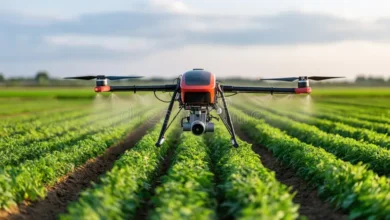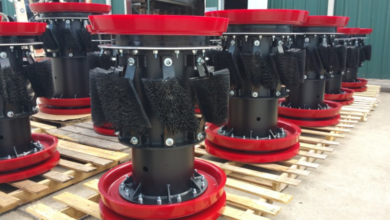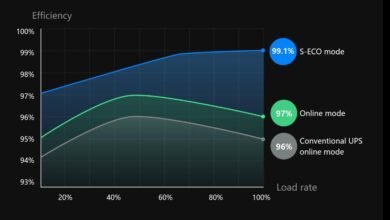Understanding the Role and Relevance of a Gas Chromatography Machine in Modern Laboratories

Scientific breakthroughs are often the result of precision, accurate analysis, and powerful instrumentation. In the field of analytical chemistry, few tools are as essential and widely used as the gas chromatography machine From pharmaceutical research to food safety testing and environmental monitoring, this advanced instrument plays a vital role in separating and analyzing volatile compounds in complex mixtures.
In this comprehensive article, we explore the inner workings of a gas chromatography machine, its components, applications, advantages, and how to choose the right model for your lab or research facility.
What is a Gas Chromatography Machine?
A gas chromatography machine is a sophisticated analytical instrument used to separate, identify, and quantify individual components in a gaseous mixture. The technique is based on the principle that different compounds in a mixture will interact differently with a stationary phase as they are carried through a column by an inert gas (called the mobile phase).
Unlike liquid chromatography, this machine requires that the sample be volatile or able to be vaporized without decomposition. This makes it ideal for analyzing gases, volatile liquids, or dissolved solids.
See also: What are the implications of deepfake technology on information authenticity and media trust?
Core Components of a Gas Chromatography Machine
To understand its capabilities, let’s break down the main components of a gas chromatography machine:
1. Carrier Gas System
This is the mobile phase that carries the sample through the column. Common carrier gases include helium, hydrogen, and nitrogen. The purity and flow rate of the gas must be carefully controlled.
2. Injector Port
Here, the sample is introduced into the machine. It is typically heated to ensure rapid vaporization, allowing it to mix with the carrier gas.
3. Column
The column is the heart of the gas chromatography machine. It is typically a long, coiled tube (often made from fused silica) that contains the stationary phase. The separation of components occurs inside the column based on their interaction with this phase.
4. Oven
The column is housed inside a temperature-controlled oven. Temperature programming helps in achieving better resolution and faster separations.
5. Detector
As the separated compounds exit the column, they are identified by detectors such as:
- Flame Ionization Detector (FID)
- Thermal Conductivity Detector (TCD)
- Electron Capture Detector (ECD)
- Mass Spectrometry Detector (MS) when coupled in GC-MS systems
6. Data Acquisition System
Modern machines are equipped with advanced software to record, interpret, and display the results in chromatograms, offering detailed analysis.
Applications of a Gas Chromatography Machine
The gas chromatography machine is used across a wide spectrum of industries due to its accuracy and versatility.
✔ Environmental Monitoring
It helps detect pollutants like pesticides, volatile organic compounds (VOCs), and industrial solvents in air, water, and soil samples.
✔ Pharmaceutical Industry
It plays a key role in quality control, detecting residual solvents, and verifying the purity of active pharmaceutical ingredients (APIs).
✔ Food and Beverage
Used to analyze additives, preservatives, flavor compounds, and potential contaminants in food products.
✔ Petrochemicals
Monitors the composition of fuels, lubricants, and crude oil derivatives, ensuring product consistency and quality.
✔ Forensic Science
Assists in toxicology, arson investigation, and drug analysis, often serving as legal evidence in criminal cases.
Advantages of Using a Gas Chromatography Machine
The popularity of this instrument is not accidental. Here are several key benefits of using a gas chromatography machine:
✅ High Sensitivity
Capable of detecting minute quantities of substances, often in the parts per million (ppm) or parts per billion (ppb) range.
✅ Fast Analysis
Separations can be achieved in minutes, making it ideal for high-throughput laboratories.
✅ Reproducibility
Offers consistent and repeatable results when properly maintained and calibrated.
✅ Wide Range of Analytes
Can separate a broad range of organic and inorganic compounds, from small volatile substances to larger semi-volatiles.
✅ Coupling with Mass Spectrometry
When combined with MS, the system provides qualitative and quantitative data with unparalleled accuracy.
Selecting the Right Gas Chromatography Machine
Choosing the best gas chromatography machine for your lab depends on several factors:
1. Nature of Samples
Consider whether you’re analyzing air samples, blood, environmental pollutants, or food products. The nature of the sample determines the required detectors and column specifications.
2. Throughput
High-throughput labs benefit from autosamplers and automated systems that reduce manual intervention.
3. Type of Detector Needed
- FID is ideal for hydrocarbons.
- ECD is useful for halogenated compounds.
- TCD is a universal detector but less sensitive.
- GC-MS provides structural identification and unmatched specificity.
4. Budget Constraints
Costs vary based on features and automation. Entry-level machines are more affordable, while advanced GC-MS systems can be a significant investment.
5. Ease of Use
Modern machines offer touchscreen interfaces, intuitive software, and automated calibration—making them accessible even to non-specialists.
Maintenance Tips for Longevity and Accuracy
To keep your gas chromatography machine operating efficiently, adhere to these maintenance practices:
- Regularly check for leaks in gas lines.
- Replace septa, liners, and filters as recommended.
- Calibrate the detector and maintain consistent temperature settings.
- Store and handle columns according to manufacturer guidelines.
- Perform routine performance checks and keep a logbook of maintenance activities.
Regular upkeep not only extends the life of the machine but also guarantees the reliability of your results.
Gas Chromatography in a Sustainable Future
As the scientific community becomes more environmentally conscious, manufacturers are working toward developing gas chromatography machines with:
- Lower energy consumption
- Reduced solvent usage
- Sustainable carrier gases
- Smaller footprint and modular design
Labs are also adopting hydrogen generators to replace helium, helping reduce operational costs and ensure a more sustainable analysis process.
Top Manufacturers and Global Trends
Several reputable manufacturers are known for producing high-quality gas chromatography machines, including:
- Agilent Technologies
- Shimadzu
- PerkinElmer
- Thermo Fisher Scientific
- Scion Instruments
Emerging manufacturers, particularly from China and Europe, are now offering competitive systems with international certifications and advanced technology.
Global trends show a steady increase in demand for portable GC systems, integrated data software with AI capabilities, and multi-detector compatibility for complex sample matrices.
Conclusion
A gas chromatography machine is an indispensable tool in today’s analytical laboratories, offering unmatched precision, speed, and reliability. Whether you’re tasked with environmental safety testing, pharmaceutical quality control, or forensic investigations, this instrument ensures that your analyses are accurate and trustworthy.
Investing in the right gas chromatography machine is not just a purchasing decision—it’s a step toward advancing your lab’s capabilities, compliance, and credibility. With the right training, maintenance, and supplier, this tool will serve as a powerful asset in your scientific journey.




